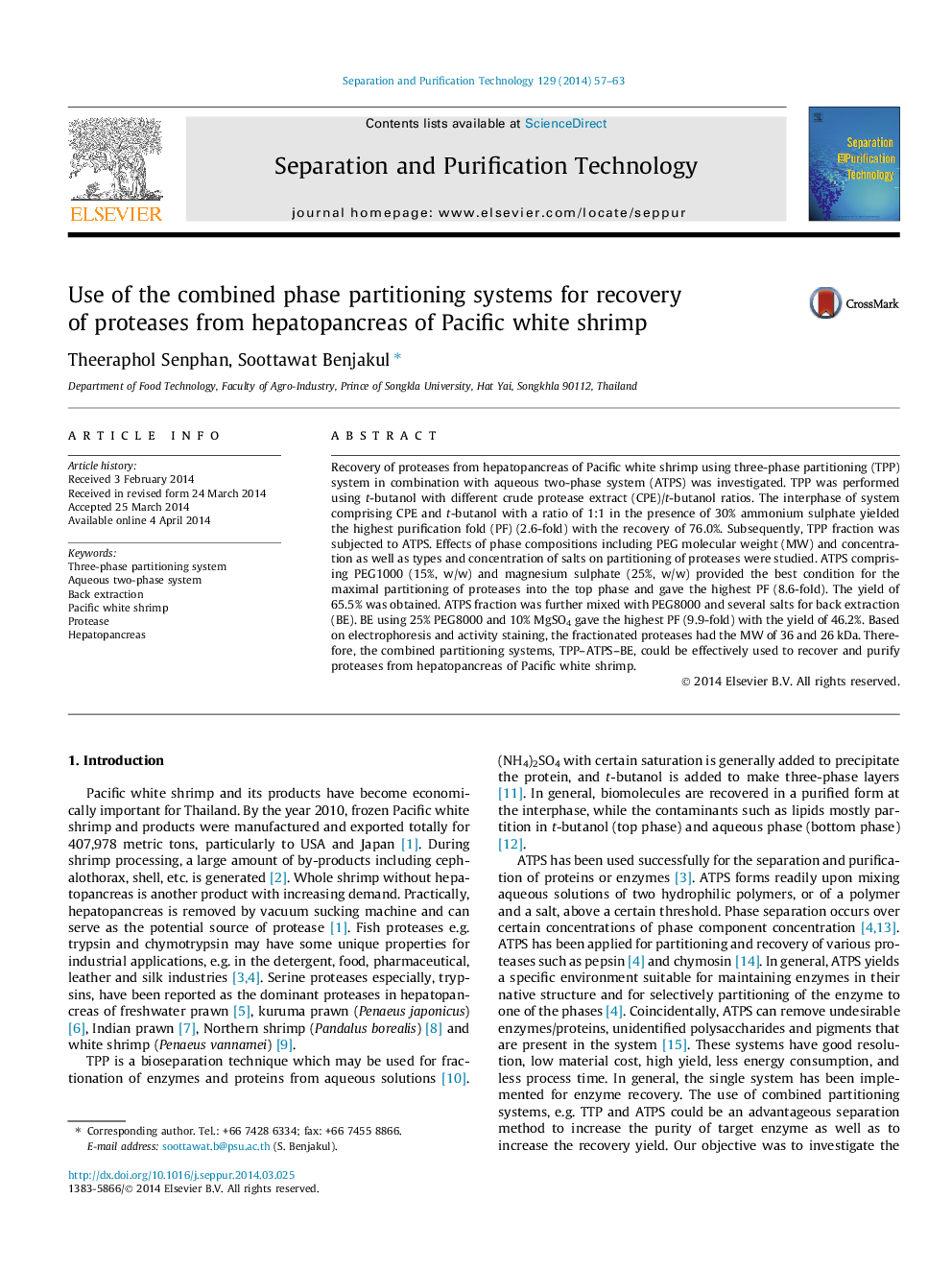| Article ID | Journal | Published Year | Pages | File Type |
|---|---|---|---|---|
| 641229 | Separation and Purification Technology | 2014 | 7 Pages |
•The combined partitioning systems (TPP–ATPS–BE) could recover proteases.•Phase compositions of ATPS and BE affected the partition of proteases.•Proteases recovered by the partitioning system hydrolysed fish gelatin effectively.
Recovery of proteases from hepatopancreas of Pacific white shrimp using three-phase partitioning (TPP) system in combination with aqueous two-phase system (ATPS) was investigated. TPP was performed using t-butanol with different crude protease extract (CPE)/t-butanol ratios. The interphase of system comprising CPE and t-butanol with a ratio of 1:1 in the presence of 30% ammonium sulphate yielded the highest purification fold (PF) (2.6-fold) with the recovery of 76.0%. Subsequently, TPP fraction was subjected to ATPS. Effects of phase compositions including PEG molecular weight (MW) and concentration as well as types and concentration of salts on partitioning of proteases were studied. ATPS comprising PEG1000 (15%, w/w) and magnesium sulphate (25%, w/w) provided the best condition for the maximal partitioning of proteases into the top phase and gave the highest PF (8.6-fold). The yield of 65.5% was obtained. ATPS fraction was further mixed with PEG8000 and several salts for back extraction (BE). BE using 25% PEG8000 and 10% MgSO4 gave the highest PF (9.9-fold) with the yield of 46.2%. Based on electrophoresis and activity staining, the fractionated proteases had the MW of 36 and 26 kDa. Therefore, the combined partitioning systems, TPP–ATPS–BE, could be effectively used to recover and purify proteases from hepatopancreas of Pacific white shrimp.
